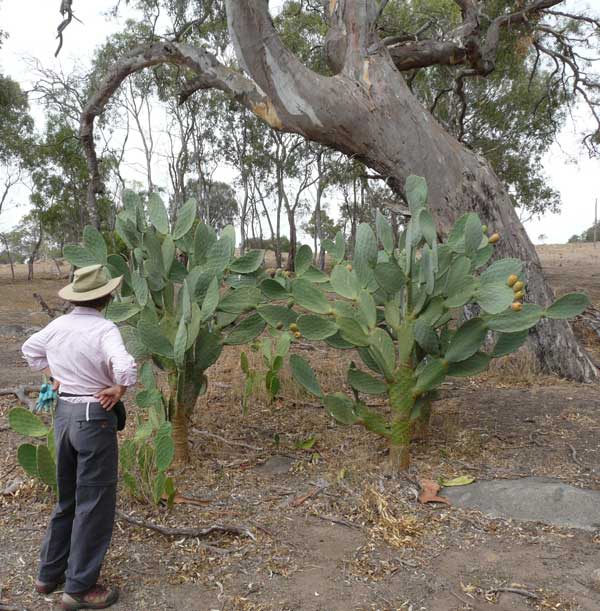
Large mature infestations of Prickly Pear occur on private land at both eastern and western ends of the park. Small plants can be found under trees throughout the park, and larger plants, up to almost 2m tall, occur here and there. This weed is possibly the only one which members of the public (other than members of Friends of Woodlands Historic Park) routinely pull out. The people who do this usually appear to realize that plants must be placed out of contact with the ground or they will take root again. However plants don't necessarily stay where they are put long enough to dessicate, and hence they often do take root.
Biological Control
This weed had rendered more 12 million hectares of NSW and Queensland unusable by 1925. Between 1911 and 1939 a total of 20 agents were released, successfully controlling it and other Opuntia species. However only the two in the following table have significant impact.
| Common Name | Scientific Name | Released | Effectiveness |
|---|---|---|---|
| Cochineal scale | Dactylopius opuntiae | 1921 | Most effective agent in cooler areas (Hosking et. al. 1994). |
| Cactoblastis moth | Cactoblastis cactorum | 1926 | Main control agent in most areas of NSW and Queensland, but not in Victoria. |